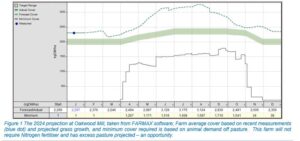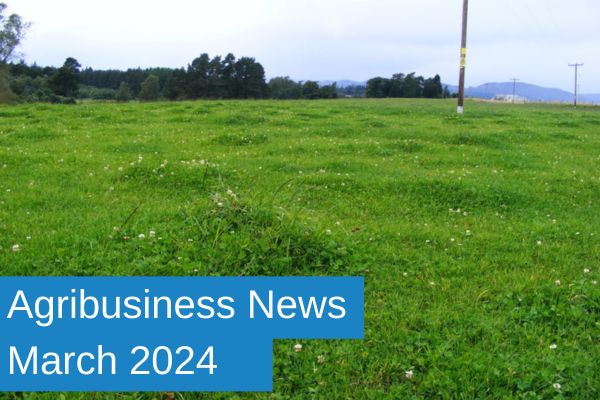Agribusiness News March 2024 – Management Matters: Grassland
1 March 2024Supporting Grass-Based Decision Making
Many are weighing up their grassland management plans at this time of year and, truth be told, it is nigh on impossible with so many variables. Traditionally, farmers might rely on previous years’ practices or intuition. However, more precise, data-driven methods like feed budgeting offer a clearer path forward.
Feed Budgeting
Feed budgeting can help when considering the application of Nitrogen (N) fertiliser, for instance. The timing of fertiliser application is critical and depends on soil temperatures reaching above 5 degrees Celsius for five consecutive days and rising.
Predicting the weather’s impact on grass growth and the subsequent need for fertiliser is challenging. Feed budgeting aids in estimating future grass requirements for livestock and the anticipated grass growth, ensuring decisions are made with a fuller understanding of needs versus supply.
Consider a farmer planning to fertilise early April in anticipation of cattle grazing from April 15th. By applying 100 units per acre of a 20:10:10 compound fertiliser, research suggests an expected increase of 250 kg of grass dry matter (DM) per hectare. This is based on the conversion of one kilogram of N into 10kg of grass DM. However, the effectiveness of this application hinges on three critical aspects: the current grass availability, the future grass availability, and the herd’s grass demand at turnout.
Simple feed budgeting principles are helpful. For instance, estimates of animal requirements shows that two and a half (700kg) cows per hectare in late pregnancy demand 22.8 kg of grass DM per day, whereas ten (70kg) ewes per hectare require 17 kg DM. Assessing grass supply involves measuring grass cover across the farm to calculate an average cover in kg DM/ha, which when tracked over time, aids in predicting future supply.
Where software can help
Utilising tools like FARMAX software within our GrazeUp service, farmers can utilise grass measurements alongside grass growth predictions, and align this with herd demand. This approach not only potentially saves costs but also optimises pasture quality throughout the season.
Predicting future grass supply can be complex without the aid of software. For example, with no animals currently grazing the turnout area and an average cover of 1600 kg DM/ha, growth rates between 3-5 kg DM/ha daily are expected in March. Over 30 days, this could increase the farm’s average cover to between 1,690 and 1,750 kg DM/ha.
Considering a minimum grazing height of 4cm, or 1500 kg DM/ha, this provides the herd with an 8 to 11-day potential supply even if April sees no grass growth. How effectively you manage that supply directly influences its duration. Implementing rotational grazing can maximise its potential while set stocking may deplete it more rapidly.
By making informed decisions, farmers can enhance productivity, optimise resource use, and improve the sustainability of their operations.

Sign up to the FAS newsletter
Receive updates on news, events and publications from Scotland’s Farm Advisory Service

